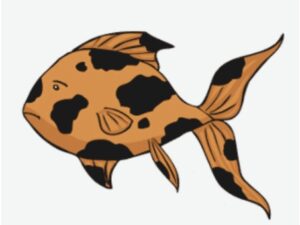Is it the first time you have encountered detritus worms in your aquarium? Don't worry – they are a common occurrence. Detritus worms are tiny segmented worms that live on the substrate of freshwater aquariums and feed on decomposing organic matter. They are usually harmless, but can sometimes become a nuisance if their population gets out of hand.
In this article, we'll discuss the causes of detritus worms in aquariums, and how to get rid of detritus worms and prevent them from returning.
Detritus worms are also known as dirt or garden worms. They can be especially problematic if they appear on the surface of your aquarium.
Table of Contents
What are Detritus Worms?
Detritus worms are long, thin, and white in color. They resemble garden or dirt worms where they crawl around the surface of your tank to find food.
Although once thought of as a pest (and still sometimes used synonymously), detritus worms are actually beneficial to your tank because they help keep it clean by consuming leftover fish food and detritus (dead plant and animal matter).
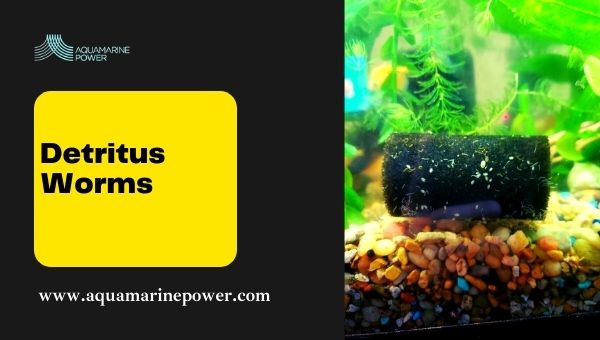
They also aerate your substrate, which helps to decrease anaerobic bacteria in the tank. However, they multiply quickly when overfed and do need to be controlled before they become out of hand.
Appearance Of Detritus Worms
Detritus worms start off as small and pale pink or white in color. As they mature, they become pinkish-red on their tops and pale underneath.
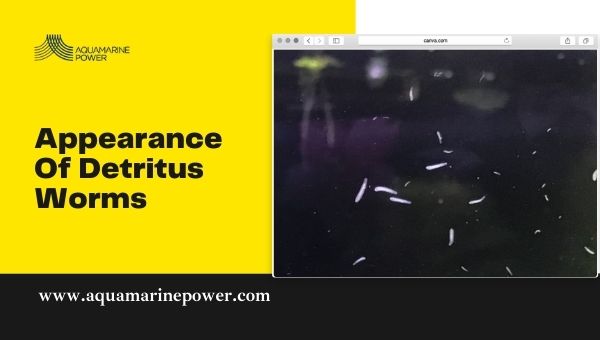
They can reach up to 1 inch in length and will vary in size depending upon the age of the worm and how much food is readily available.
Reason Of Detritus Worms Getting Inside Your Tank
The causes of detritus worms are an excessive amount of uneaten food lying around on top of your substrate, overfeeding, or even decaying pieces of plant matter if you have live aquarium plants.
Detritus Worms can be one of the most common types of worms found in a fish tank, and there are several different reasons why they may appear.
The first reason is that you might have an excess amount of uneaten food lying around on top of your substrate. Because the food will not be eaten, it starts to decay, and this is when it can appear.
The second reason why detritus worms may appear in your fish tank is that you have been overfeeding your fish recently, which has led to excess amounts of uneaten food having been left on or just below the surface of the substrate.
Detritus worms are also known as dirt or garden worms. They can be especially problematic if they appear on the surface of your aquarium.
Also Read: 31 Best Low Light Aquarium Plants: Easy Care
How Harmful Is Detritus Worms ?
Detritus worms are actually quite harmful to your fish, and they can spread illnesses in the tank, which will kill them if you don't get rid of them, so it's important that you fight back against these annoying little pests!
They usually start out as pink in color, but once they're exposed to light, then they quickly turn brown or grey, which enables them to blend in with your gravel.
Detritus worms reproduce quickly and will soon take over your tank if you allow them, so it's important that you do something about them as soon as possible before things get out of hand!
It's also worth noting that detritus worms are usually brought into the tank via new plants or substrate, so make sure you're not bringing any of them inside your tank.
Although some people will say that detritus worms are beneficial to your tank as they remove excess food and other bits which cause bad bacteria to grow, the truth is that if their numbers get too high, then they can overwhelm your fish and kill them, which is the last thing you want!
Detritus worms are incredibly harmful, so it's important that you don't allow them to take over your tank and instead get rid of them as soon as possible.
Prevention Of Detritus Worms Getting Back Into Tank ?
If you do want to get rid of these worms, then it's best to know how to prevent them from coming back in the first place - especially if they've only just arrived.
One common way of doing this is by using vinegar as fish are very sensitive when it comes to the PH levels in your tank, and even a small amount of acid can cause a lot of damage.
- Contains one (1) API PH TEST KIT 250-Test Freshwater Aquarium Water pH Test Kit,...
- Helps monitor and adjust pH and prevent invisible water problems that can be...
- Accurately reads pH 6.0 - 7.6 and helps avoid fish loss
- Because different geographies have different tap water conditions, and different...
Another thing that you can do is to regularly use Alka seltzer tablets as they'll quickly break up the water, and because fish are very sensitive towards the smell, it won't be noticed.
If you don't want to use either of these methods, then the best way is to try and find what's attracting them in the first place and remove it from your tank.
Methods To Get Rid Of Detritus Worms
Detritus worms aren't beneficial to your fish tank, and if their numbers get too high, then they can cause problems for your fish, so make sure you don't allow them to take over your tank!
Even though detritus worms are actually quite useful for your fish tank as they help to break down the leftover food, if their numbers get too high, then they can overwhelm your fish and cause major problems - which is definitely something you want to avoid.
Although it's important that you don't allow detritus worms to take over your tank, it's not that difficult to get rid of them if you use one of the methods above - just make sure that you choose a method that suits your budget and experience so that their numbers are kept to a minimum.
- The first thing that you want to do is siphon as much of the detritus worms from your substrate as possible. If you have a large number on your fish tank then it might be worth considering adding a couple of snails into the tank as they are natural predators to detritus worms.
- Do not overfeed your fish as this will only result in the excess food decaying and turning into more detritus worms.
- Do not leave any dead plant matter lying around on top of your substrate as it can be just as bad for them to decay there before you've had a chance to remove them out of the tank.
- You can also wipe around the surface of your substrate with a wet cloth to remove most of the detritus worms off before adding any substrate back into your tank after you've cleaned it out.
- If you have an excess amount on the surface of your fish tank then do not worry too much as they will be easy to remove by using a net and there isn't much else you can do about them.
- Another option is to buy some algae wafers as these are a great food for detritus worms and you can leave the excess lying around on your substrate if they end up not being eaten by your fish too. This way it will be easier to get rid of them.
- You can also try adding some cherry shrimp, neon tetras, or guppies into your tank which are all great for eating detritus worms too.
- It is recommended that you do not use pesticides or any type of chemicals on them as this will affect your fish and plants and is not a natural way of removing them.
- Make sure that you remove any uneaten food from your tank as this will just accumulate and turn into more detritus worms if left there. It's also recommended that you rinse all of your plants before adding them to the tank so they don't contain any excess detritus either.
- If you're adding new low light aquarium plants into your tank then you can place them straight into the substrate if they're an inert plant like an anubias or java fern.
- If you have gravel on top of your substrate then it's important that you take it out and clean it first before putting any back in the tank as this should remove any detritus worms.
- It's important that you do not use any type of gravel from another tank as this will contain any detritus worms from before and is not good for introducing these into your current tank.
- If you have a betta fish in your tank then it's important to be extra careful when trying to get rid of these worms as they can actually cause betta disease which is incurable and will kill them.
- If you have an algae eater in your tank then it's likely that it will eat up any detritus worms so you can try adding one to help you get rid of them if other methods aren't working for you.
- Sometimes, detritus worms can be a sign of excess nitrates in your tank and if this is the case then recommend learning more about how to get rid of them here as they can actually be quite dangerous for your fish and will kill them if your levels are high enough.
- The last thing you can try is to introduce some snails into your tank as they will eat up any leftover food and detritus that are lying around but make sure that they are not competition for any newly introduced fish that you have in the tank as well.
Cleaning Tips To Get Rid Of Detritus Worms
Luckily, detritus worms are relatively easy to get rid of, and there are a few different methods that you can use in order to remove them from your tank.
1. Cleaning Your Tank Regularly
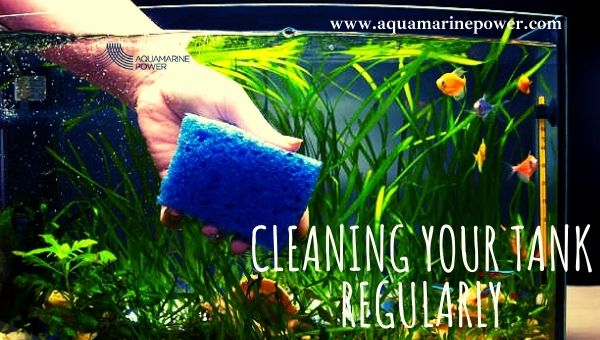
The number one way to get rid of these little pests is to clean your fish tank regularly, as this will stop the food that they need in order to survive.
2. Using Cleaning Chemicals
- Natural organic waste management
- Fast acting
- For marine and freshwater use
You can also use cleaning chemicals that are specifically designed to kill off detritus worms, but you need to be careful as some of them are quite expensive - plus, they might not work that well if your water is still cloudy with bits floating about.
3. Cleaning Out Extra Food
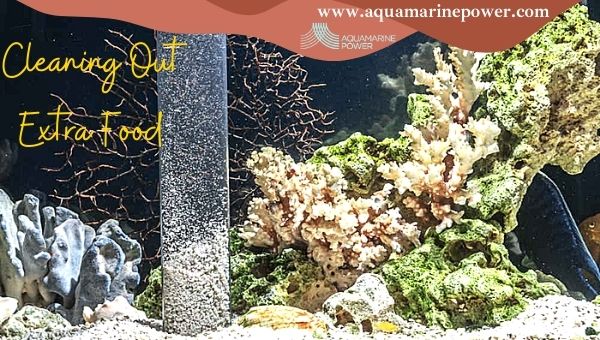
Another way to get rid of detritus worms is to remove all of the food sources that they need in order to survive, so make sure you don't overfeed your fish tank and only feed them what they can eat within around 30 minutes or so.
4. Using Baking Soda
- Made from anhydrous pure powdered sodium bicarbonate with no additives or...
- Use as a cleansing booster with your laundry or dish detergent, as a pH buffer...
- Great household product for any thing that needs a bright new look!
- Non-perishable. Packaged in resealable bag to preserve freshness. Store away...
You can also use baking soda to kill off detritus worms as it's a natural antiseptic that also prevents bacteria from growing, so just put some baking soda into the substrate, and all of the worms should be killed off after a few days if you haven't already got rid of them.
5. Using Sandpaper
You can also remove detritus worms by using sandpaper to scratch off the top layer of your gravel, but make sure you don't remove too much as you need a proportion of gravel in order for it to work.
6. Using Vinegar
Finally, you can use vinegar to kill off these harmful pests, and although this one takes a little while longer than others, it's just as effective.
Just put some vinegar into your tank and wait for it to evaporate, then repeat the process again if needed - of course, you'll need to leave some vinegar at the bottom of your tank so that it doesn't evaporate too quickly.
Also Read: Buy The Best Durable Acrylic Fish Tanks
Alternative Way To Get Rid Of Detritus Worms
Detritus worms are incredibly harmful to your fish tank, but thankfully there are many different ways in which you can remove them from your aquarium.
There are some fish that you can use to help get rid of these pests, and one way is to buy a small freshwater shrimp, which will munch their way through the detritus worms.
But if you have an overpopulated tank with lots of detritus worms, then this might not be a viable solution as they'll all be eaten within a couple of days.
Another method is to use Garra Rufa fish (also known as Doctor Fish) as they're great for eating detritus worms, and you can't even feel it when it happens - plus, your other fish won't eat them!
Alternatively, if you don't want to risk putting in any other fish, then you can always try using a snail as they love eating these worms, and most of the time, the fish won't even notice.
Even though it might seem like a good idea to use cichlids or any other type of carnivorous fish to eat the detritus worms, this is actually a bad idea, and they don't eat them as they think; your fish will be a good snack instead!
If you use any of the methods above or even if their numbers aren't too high, then it's best to start off with just one type of fish and see how well they do - as you don't want all of your other fish dying as well.
Even though detritus worms are actually quite useful for your fish tank as they help to break down the leftover food, if their numbers get too high, then they can overwhelm your fish and cause major problems - which is definitely something you want to avoid.
Do Shrimp Eat Detritus Worms?
No, shrimp only eat the food that is available in their environment and this includes algae and plants. However, they can sometimes feed on detritus worms if they are available, but they will not actively seek out and eat them.
Conclusion
Detritus worms are incredibly common, and they can quickly take over your tank if you don't get rid of them as soon as possible, so it's important that you do something about them as soon as possible before things get out of hand.
This article describes detritus worms and how they're harmful to your aquarium. Also provided is information on getting rid of them with Vinegar, Alka seltzer, or using certain fish.
There are three basic types of detritus worms, and they can be identified by looking at their head. And if you look closely, you might even see that they have eye spots just like fish do, which is an unusual trait for a worm.
Detritus worms come in all sorts of shapes and sizes, and some of them look really cool - which is the reason why many people decide to add them to their tank in the first place!
However, detritus worms can do a lot of damage, and even though they're small and slimy, they can quickly take over your fish tank if you don't get rid of them.






